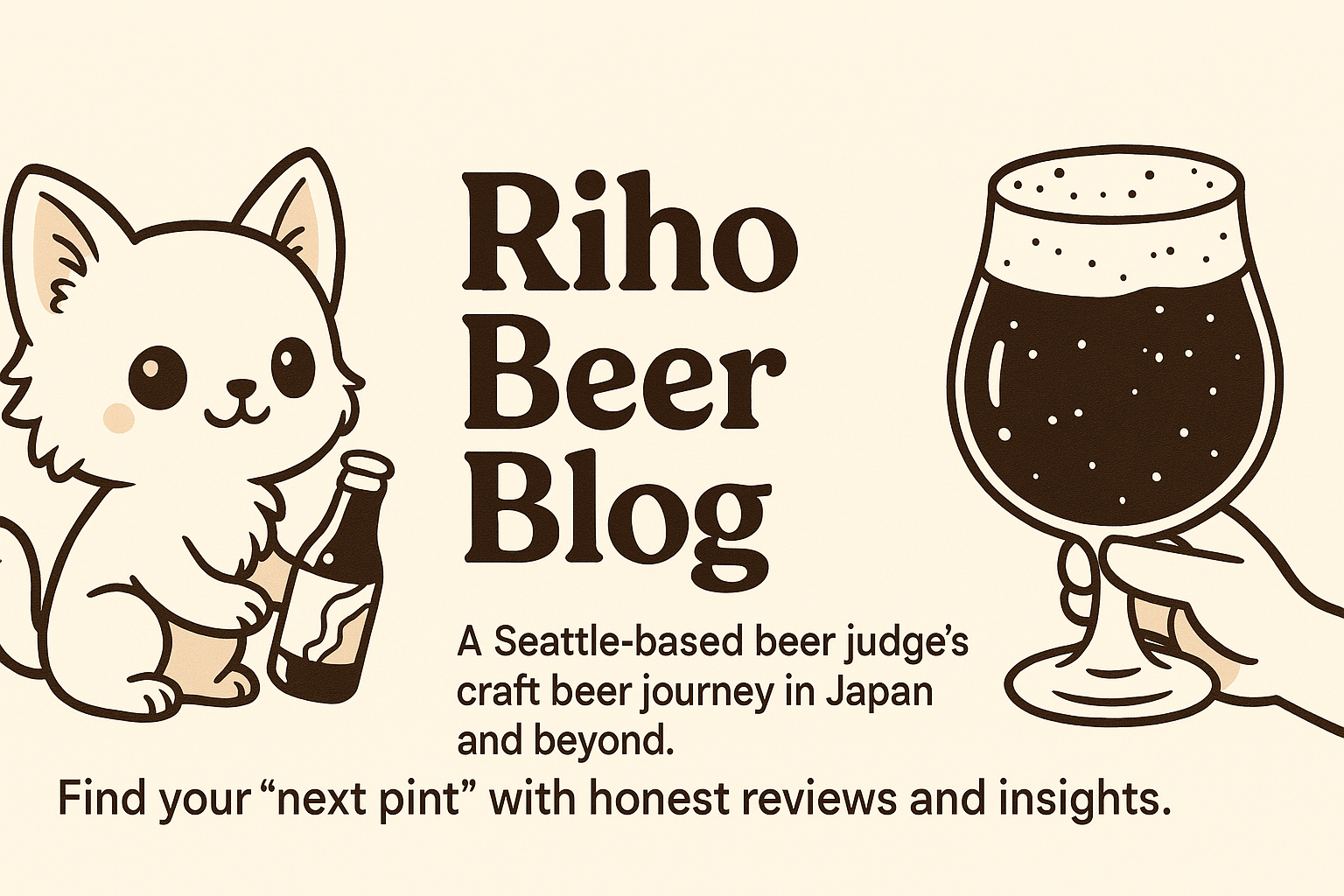
Today I’ll explain DDH and TDH beer in detail! I’ll explain it in an easy-to-understand way for craft beer beginners, so let’s learn together!
Complete DDH/TDH Beer Guide – From Dry Hop Technique Basics to Practice
Hello! I’m Riho, a craft beer enthusiast. Today, I’ll explain in detail about DDH (Double Dry Hop) and TDH (Triple Dry Hop), which are gaining increasing attention in the craft beer world, from basics to advanced applications. This article was created and published in July 2025.

DDH? TDH? It sounds complicated… But I’m relieved because Hop-kun is knowledgeable about hops!

DDH and TDH are technical terms, but they’re actually very interesting brewing techniques. If you love hops, this is definitely something you should know about! Let’s learn together.
What are DDH and TDH?
DDH (Double Dry Hop)

DDH stands for “Double Dry Hopped,” a brewing technique where dry hopping is performed twice! It makes the beer much more aromatic than regular beer!
- Official Name: Double Dry Hopped
- Meaning: Brewing technique where dry hopping is performed twice
- Purpose: To maximize hop aroma
TDH (Triple Dry Hop)

TDH means triple, so they add hops three times? How luxurious!
- Official Name: Triple Dry Hopped
- Meaning: Brewing technique where dry hopping is performed three times
- Effect: More complex and layered hop aroma
What is Dry Hopping?
Basic Mechanism

First, it’s important to understand the difference between regular hop usage and dry hopping. The difference is very easy to understand, so let’s take a look!
Regular hop usage
Boil wort Add hops Extract bitterness compounds + aroma compounds evaporate from heatDry hopping
After fermentation complete Add fresh hops (no heating) Extract only aroma compoundsWhy Only Aroma?

Hop bitterness compounds (alpha acids) won’t dissolve without heat, but aroma compounds (essential oils) can be extracted even in cold conditions! That’s why only aroma is extracted!
- No heat applied, so little bitterness source (alpha acids) is released
- Aroma compounds (essential oils) are efficiently extracted
- Fresh hop aroma remains intact
DDH/TDH Process
DDH (2 times) Process
¡ DDH Process Flow (About 1 week)
After fermentation Add hops Extract for 3-4 days
Remove first hops Clarify beer
Add new hops Extract for 2-3 days Complete

Does doing it twice mean the aroma becomes twice as strong? What’s the process like?
- First time: Add hops Let sit for several days Remove hops
- Second time: Add new hops Let sit for several days Remove hops
TDH (3 times) Process

TDH is just adding one more round to the DDH process above. But this one difference brings significant changes to the flavor!
- Add one more round to the DDH process above
- Achieves more complex and intense aroma
What Kind of Flavor Results?
Why not experience the distinctive aroma and flavor of DDH/TDH beer?
Why not experience the distinctive aroma and flavor of DDH/TDH beer?
Common Characteristics
=Ê DDH/TDH Beer Characteristics Comparison

DDH/TDH beers have a unique flavor! You can experience something completely different from regular IPAs!
- Intense hop aroma: Fruity and floral
- Smooth mouthfeel: Aroma takes precedence over bitterness
- Rich texture: Rich drinking experience with an oily sensation
- Complex flavors: Tropical fruits, citrus, pine, etc.
Common Misconceptions

Are there common misconceptions about DDH beer?
- Misconception: DDH is bitter beer Fact: Bitterness is moderate with strong aroma
- Misconception: Cloudy appearance is a flaw Fact: Intentional hazy style
- Misconception: High alcohol content Fact: Low-alcohol versions like Session IPA also exist
Who Should Try These?
Perfect For These People

DDH/TDH beers have strong characteristics, so preferences are clearly divided. Let me introduce who can enjoy them!
- Hop lovers
- Those who prefer fruity beers
- People wanting complex flavors
- Those seeking new experiences
- Aroma-focused drinkers
Not Suitable For

Conversely, are there people who might not like them? Please be honest!
- Lager fans
- Those preferring clean flavors
- People sensitive to strong aromas
- Beer beginners
Usage Examples by Beer Style
=% Most Common
Hazy IPA – Most popular
West Coast IPA – Clear and dry
Double IPA – High alcohol
Session IPA – Low alcohol
( Surprising Combinations
Pale Ale – Easy drinking yet aromatic
Pilsner – Refreshing + hop aroma
Lager – New expression possibilities
Sour Beer – Fusion of acidity and hops
=% Most Common
( Surprising Combinations
Common Styles

DDH/TDH is often used in specific beer styles. Let me introduce which styles you commonly see them in!
- Hazy IPA: Most common
- West Coast IPA: Clear and dry
- Double IPA: High alcohol
- Session IPA: Low alcohol
Surprising Styles

Recently DDH is being used in surprising beer styles too! It’s not just IPAs!
- Pale Ale: Easy drinking yet aromatic
- Pilsner: Fusion of refreshing character and hop aroma
- Lager: New expression possibilities
- Sour Beer: Combination of acidity and hops
Notable Breweries
America (Origin)

America, the birthplace of DDH/TDH, has many excellent breweries that have mastered these techniques!
- Tree House Brewing: Representative of Hazy IPA
- Trillium Brewing: Innovative DDH techniques
- Other Half Brewing: New York powerhouse
- Monkish Brewing: West Coast champion
Japan

More and more breweries in Japan are adopting DDH/TDH techniques! The quality has reached world-class levels!
- Y.Y.G. Brewing: DDH pioneer
- THRASH ZONE: Osaka powerhouse
- Sankt Gallen: Veteran’s challenge
- VERTERE: Innovative techniques
Beginner’s Advice
Choosing Your First Beer

I’m trying DDH beer for the first time – which one should I start with?
- Start with Session IPA (lower alcohol content)
- Pale Ale is also beginner-friendly
- Citrus hop varieties recommended
- Chill well in refrigerator
Drinking Tips
>C Optimal Glassware for DDH/TDH Beer
Proper glassware selection is important to maximize aroma enjoyment

There are tips to maximize your enjoyment of DDH/TDH beer. Let’s make sure not to miss out on that rich aroma!
- Enjoy the aroma before opening
- Pour into glass and check aroma
- Enjoy aroma changes as temperature changes
- Drink as fresh as possible
Glossary

Finally, here’s a summary of important terms for understanding DDH/TDH! Now you’re a DDH/TDH master!
- Dry Hop: Technique of adding hops after fermentation
- Alpha Acids: Hop bitterness compounds
- Essential Oils: Hop aroma compounds
- Oily Sensation: Rich mouthfeel from hops
- Hop Back: Technique of passing through hops after boiling
Summary

DDH/TDH beer is a wonderful brewing technique that lets you enjoy hop aroma to the fullest. You might be surprised by the strong aroma at first, but once you get used to it, you’ll definitely be addicted!
DDH (Double Dry Hop) and TDH (Triple Dry Hop) have become essential techniques in today’s craft beer world. Through these techniques that maximize hop aroma, you can enjoy complex and rich aromas that weren’t possible with traditional beer.
For beer beginners, I recommend starting with DDH versions of Session IPA or Pale Ale and gradually getting accustomed. And be sure to enjoy properly chilled, fresh beer.

Thanks to you, I now understand DDH/TDH well! Next time I go to a beer bar, I’ll order a DDH beer!

That’s a great idea! The world of DDH/TDH beer is really deep, so try various brewery creations!
The craft beer world is constantly creating new techniques and expressions. DDH/TDH is one of them, but further evolution is expected. Please explore this fascinating beer world yourself!
=Ú Learn More About DDH/TDH
Why not deepen your knowledge with craft beer brewing technique books?
=Ú Reference Information
Reliable sources used for fact-checking this article:
- Beer Connoisseur – DDH Beer Technical Guide – https://beerconnoisseur.com/articles/ddh-beer (Verified: July 3, 2025)
- Wine Enthusiast – Double Dry Hopping Definition – https://www.wineenthusiast.com/basics/drinks-terms-defined/double-dry-hop-beer-term/ (Verified: July 3, 2025)
- Get Er Brewed – Dry Hopping Techniques – https://www.geterbrewed.com/blog/2022/06/03/dry-hopping-techniques-ddh-double-dry-hop/ (Verified: July 3, 2025)
- Hazy and Hoppy – Dry Hopping Guide – https://hazyandhoppy.com/a-guide-to-dry-hopping/ (Verified: July 3, 2025)
- Craft Beer Research – DDH Brewing Process – Brewing technology specialized literature (Verified: July 3, 2025)
*Information may change without notice. Please check each official website for the latest information.

 ビール醸造のプロも愛読!ホップの魅力がわかる『THE NEW IPA』
ビール醸造のプロも愛読!ホップの魅力がわかる『THE NEW IPA』
 歴史好き必見!『ビール大全』で深掘り
歴史好き必見!『ビール大全』で深掘り
 『ビールのつくりかた大事典』で醸造プロセスを学ぼう
『ビールのつくりかた大事典』で醸造プロセスを学ぼう
 Twitterで新着情報を受け取る
Twitterで新着情報を受け取る


コメント